More than Wii Sports?
You're always going to hear people say "Nintendo Land is not a Wii Sports." "Nintendo Land has the most depth of any minigame collection out there." "Nintendo Land is a full, retail title." And all of those statements are true, at least to an extent. But despite what's going for it, Nintendo Land is still a minigame collection, and like most minigame collections, it lack longevity. Now, keep in mind that I'm not saying Nintendo Land is a bad game. It truly is a lot of fun, but at an MSRP of $60, it's definitely hard to recommend. That's why reviews like this exist so that you, the reader, can decide for yourself as to whether or not this game is worth its asking price.
I'm going to do this review a bit differently than I usually do. As a minigame collection, the value of the entire package is completely dependent on the items within it, so each item will be reviewed independently, with the final score at the end reflecting Nintendo Land as a whole. So let's start, shall we?
Nintendo Land is divided into three sections: Team Attractions (which include The Legend of Zelda: Battle Quest, Pikmin Adventure, & Metroid Blast), Competitive Attractions (which include Mario Chase, Luigi's Ghost Mansion, & Animal Crossing: Sweet Day), and Solo Attractions (which include Yoshi's Fruit Cart, Octopus Dance Donkey Kong's Crash Course, Takamaru's Ninja Castle, Captain Falcon's Twister Race, & Balloon Trip Breeze).
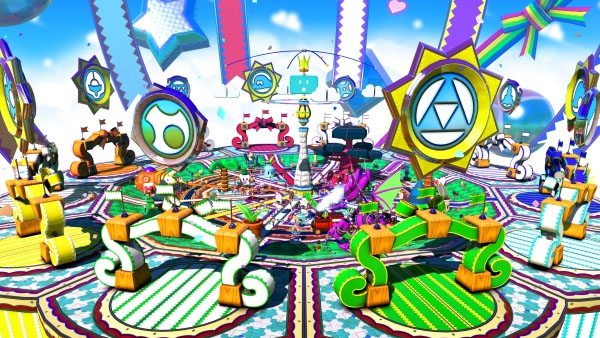
First, let's start with the Team Attractions.
The Legend of Zelda: Battle Quest is a sort of on-rails action-adventure hybrid that utilizes the Wii U GamePad's gyroscope technology so that the player with the GamePad can move the controller around in order to aim and shoot at enemies. If you are playing with friends, the other players take hold of Wiimote+'s (or if you still have the Motion+ dongle you can use that as well) and slash their way through enemies... which feels light-years more satisfying than playing with the GamePad. The problem with this game is that playing on the GamePad feels slow and boring (it feels like a gallery shooter), while playing with the Wiimotes feels like mindless hack and slash. It's a good thing the levels is interesting though, because the stitched, patched-up world of Hyrule looks great; in fact, I'd argue that the best part of the game is exploring these locales of bright and flashy colors. There is a separate mode for just the GamePad player and acts as a score-attack shooting gallery, though you'll most likely just play it once or twice as practice for the main game.
Metroid Blast is a action-shooter game designed around using the Wii U GamePad's gyroscope functionality to allow players to shoot with accuracy and precision, much like in Battle Quest. Unlike the Zelda attraction, however, this isn't an on-rails shooter. It's one of the more complicated of Nintendo Land's attractions, utilizing both the analog sticks and gyroscope to control an airship from a third-person point of view. Though the controls may feel awkward at first, it quickly becomes a fun attraction in both single-player and multiplayer modes. The best thing about Metroid Blast is that it shows that Nintendo has finally gotten gyroscope controls right; controlling your ship feels surprisingly natural and precise, which is a nice upgrade from Nintendo's previous gyroscope ventures... like Face Raiders. Players using the Wiimote will love the accuracy Motion+ gives them and makes for fantastic competitive firefights. The game lets you choose between missions or battle, both of which are fantastic. If I were to choose my favorite attraction in Nintendo Land, it would probably be Metroid Blast.
Pikmin Adventure is unique from the other two Team Attractions in that it doesn't utilize the Wii U's gyroscope technology to make an impression. Instead, the player on the GamePad uses the touchscreen in order to shoot projectiles (called Pikmin... just in case you didn't know) at enemies from an overhead point of view. Players not on the GamePad can move their own Pikmin character with the Wiimote with gameplay reminiscent of other rogue-like adventure games. Overall, this is a fine attraction that requires more time to invest in and appreciate, but is nonetheless a fun experience, with or without friends.
The above three Team Attractions are the cream of Nintendo Land's crop. Not only do they show off the Wii U's capabilities, but they also provide a fun experience for everyone, whether you're alone or with friends. Though the Zelda attraction may get old quickly, there's no doubt that all three of these games are of high quality.
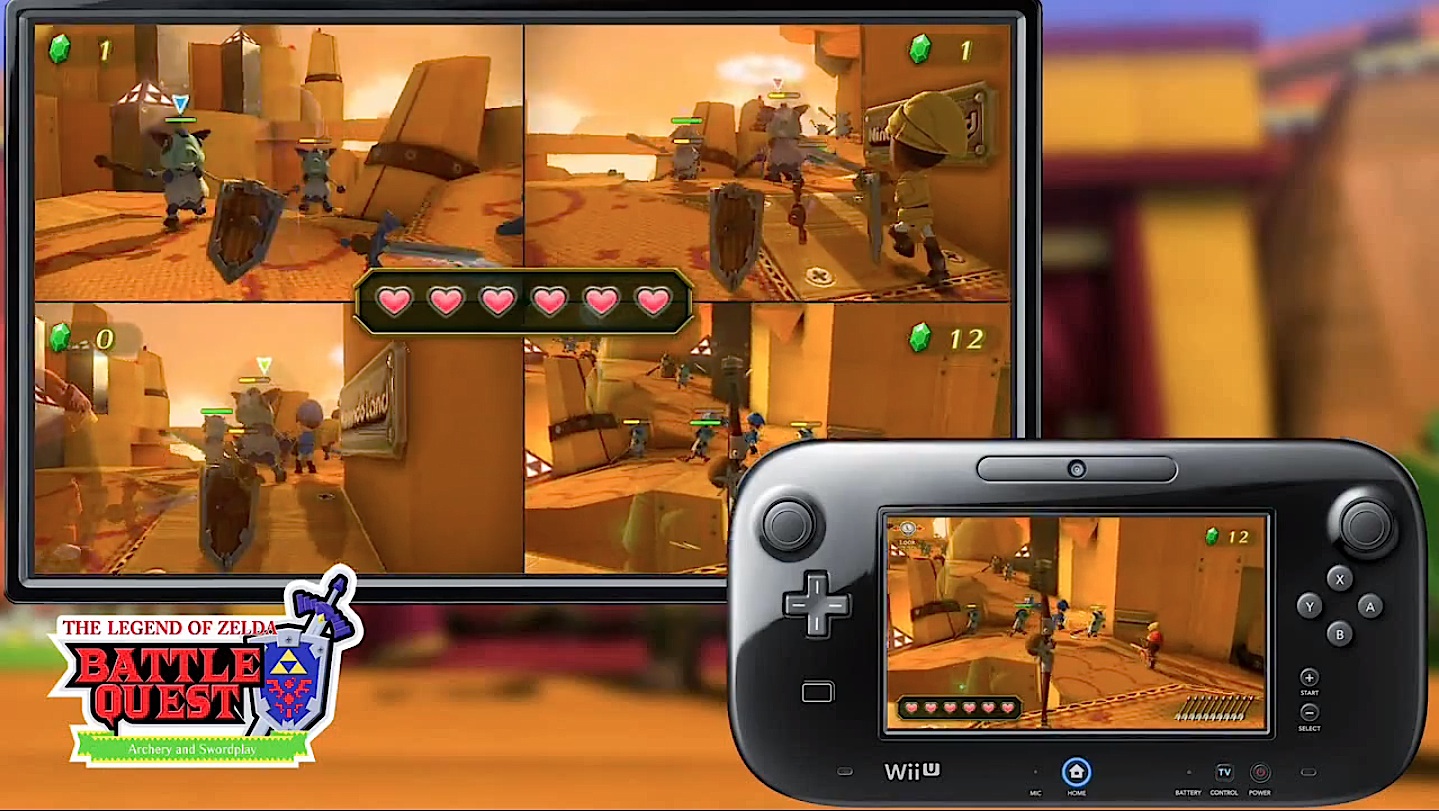
Next, let's move on to the Competitive Attractions.
Mario Chase involves the player on the GamePad to play as Mario, running away from the Toads in an effort to stay alive for two and a half minutes. In many ways, Mario Chase can be described as a glorified version of tag, and succeeds in keeping alive the spirit of running around the playground as kids. However, I did find the controls for the Toads, which are tasked in chasing and catching Mario, a bit cumbersome. First, there in no way to move the camera around freely, as the Wiimote lacks a second D-Pad analog stick. Second, because the Wiimote uses the D-Pad for movement, Toad can only move in eight directions, which can be frustrating for those who desire accuracy. Nonetheless, Mario Chase is one of the better games in Nintendo Land and benefits from building off of a simple concept of our childhood.
Luigi's Ghost Mansion is similar to Mario Chase in that one player has the GamePad and it's up to the players on the screen to catch. It's different, though, in how the game is structured. While the players on the screen are trying to catch the GamePad player with their flashlights, the GamePad player also has the ability to catch players behind their backs. This means that, unlike Mario Chase, the player on the GamePad becomes a threat, and because it is impossible to see the GamePad player without light, such a setup increases the sense of tension for all players. It's definitely a unique way to play a game, but because the game is so slow-paced, I didn't find it all that appealing. I know there are people out there who like this sort of high-tension, low-action game, but I'm not one of them, unfortunately.
Animal Crossing: Sweet Day is the last of Nintendo Land's competitive attractions and involves the players on Wiimotes picking up marbles (and, in some modes, placing them in the numerous baskets scattered around the course). The player on the GamePad controls two guards – one controlled with the right stick, the other controlled with the left – in an effort to catch these thievish animals a total of three times. What's interesting with this game is that controlling two characters with two sticks is something that has rarely been done before, and coordinating the two may take some time getting used to. But in the end, you'll definitely appreciate Animal Crossing: Sweet Day for being just a fun multiplayer game. It's just a shame that the total number of stages in this attraction only amount to a grand total of just two.
These Competitive Attractions, though not as great as the Team Attractions, are excellent for quick bursts of fun at parties. In fact, I'd argue that's the exact purpose of these Competitive Attractions, as none of them really have any serious depth. They are also a lot simpler than the Team Attractions; the gyroscope is never used and the idea of having a separate screen for another player is easy to understand. So, in summary, these games are fun to play, but may or may not last too long depending on how you play them.
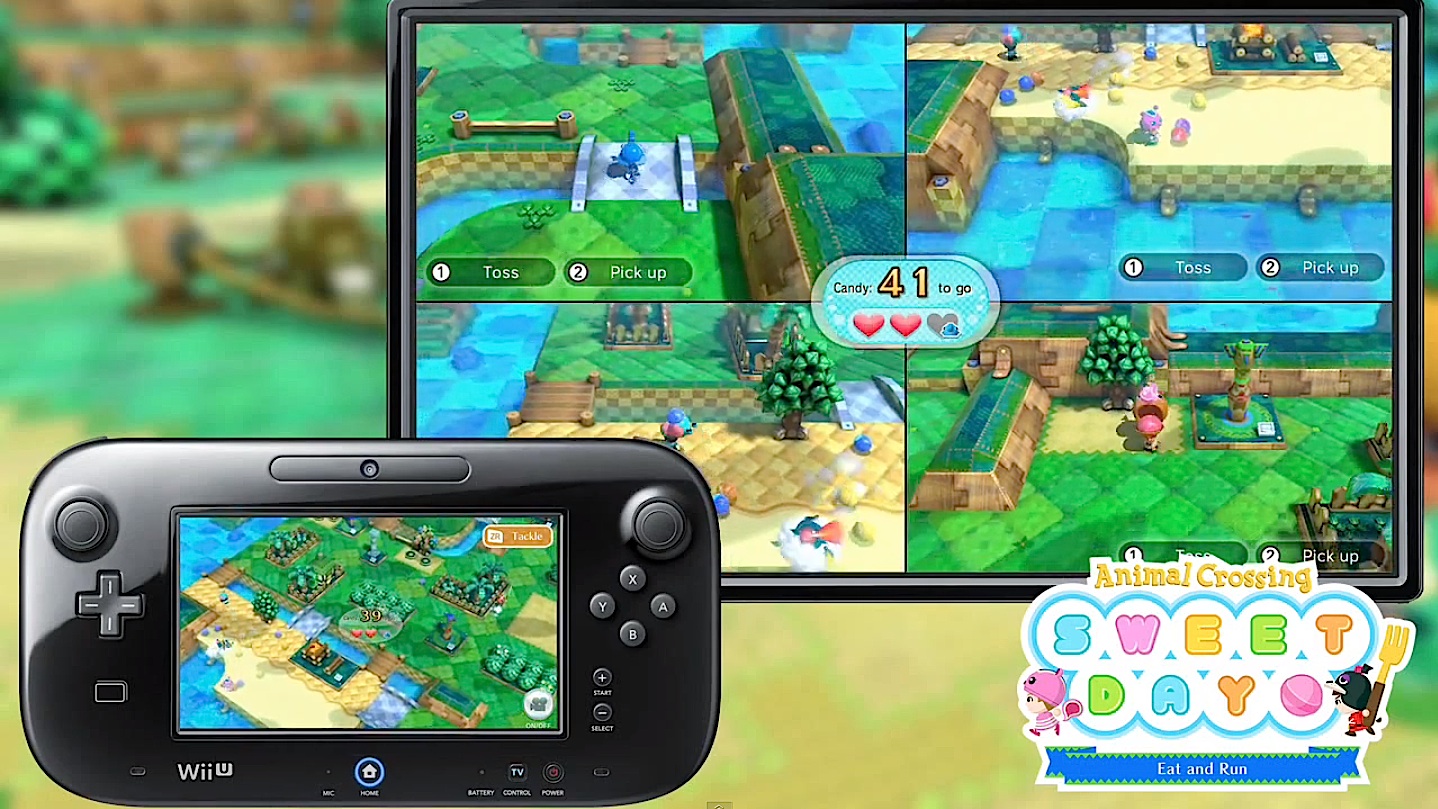
Hmmm... it seems like these attractions are getting worse and worse. See a trend? Let's move on to the Solo Attractions...
Yoshi's Fruit Cart is... boring, to say the least. It's a test of the player's spatial recognition, as players must draw a path for Yoshi to follow while picking up plates of fruit and dodging whatever obstacles may get in your way. It's a thinking man's game, though it doesn't really require much... thinking. The levels do grow progressively more complex, but the whole attraction eventually becomes very repetitive and not worth giving a second look.
Given my love for rhythm games as Parappa the Rapper and Rhythm Heaven, Octopus Dance is actually kind of decent. It's a "Simon Says" type of game; the computer player gives you commands and it's your job to copy them. These commands can range from waving your arms (controlled by the left and right analog sticks) or jumping and leaning (done by tilting the GamePad). Occasionally, your screen may be obstructed by obstacles and you must respond by looking at the other screen (which acts as a mirror, adding a layer of complexity to the game). And surprisingly, it's a lot of fun.
Donkey Kong's Crash Course is a 2D sidescrolling obstacle course that requires players to tilt the GamePad around in order to guide the little wooden cart to the finish line. The game is punishingly difficult, as the platforming sections require precision and accuracy, something that players with shaky hands will no doubt struggle with. Unfortunately, this game does nothing to show us what the GamePad can do. The TV screen and the GamePad screen are practically identical, except that one screen is more zoomed-in than the other. The tilting functionality is also old technology; this game probably could have run on the Wii with no problems whatsoever. It's cool for sure, but unimpressive in every way.
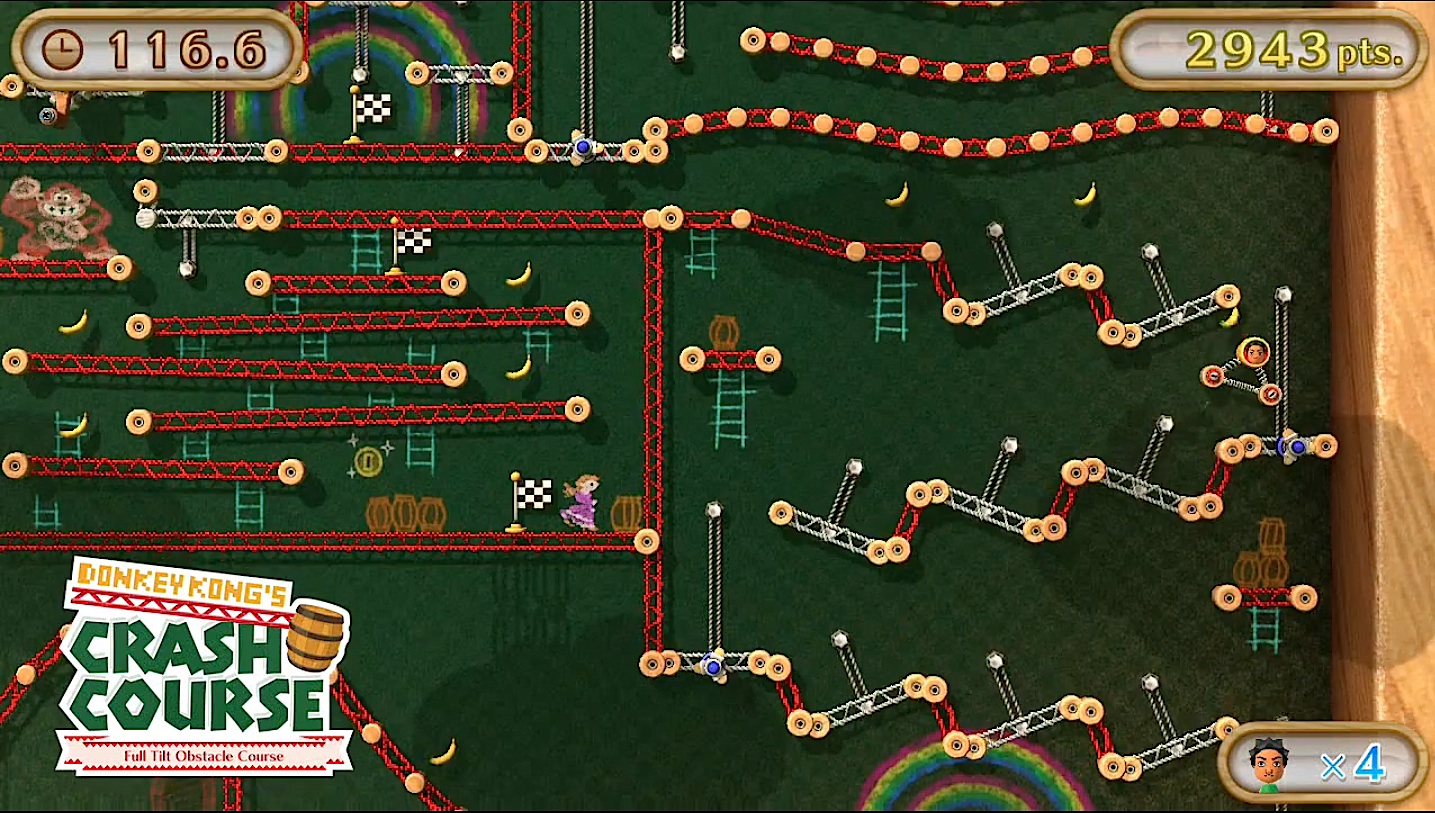
Takamaru's Ninja Castle is, despite what you've been hearing, actually kind of fun. It involves you holding the GamePad withone hand like a plate, then using your other hand to slide ninja stars off the GamePad and onto the screen thanks to the GamePad's gyroscope. It's a simple game that has some depth to it (combos, power-ups, etc.) and it's probably the simplest of all of Nintendo Land's solo attractions. What I don't understand, though is why Takamaru is being used in this attraction. Why not just... Ninja Kirby or something? No one, and I repeat no one, is looking forward to a Takamaru revival.
Captain Falcon's Twister Race is one of the more boring of the Nintendo Land attractions as the sole purpose of the game is to show off the GamePad's tiltometer functionality. The concept is that you're placed onto a racecourse with a bunch of obstacles, and your job is to tilt the GamePad left and right to steer your racecraft out of harm's way. Occasionally, you'll have to look up at your TV to see under tunnels, but ultimately, this game is the equivalent of a free iPhone game, adding no value whatsoever to the Nintendo Land package.
Balloon Trip Breeze is different from the other single-player attractions in that this one is actually kind of fun. Players control the their character by swiping the GamePad touch screen, emulating gusts of wind in the game world. The point of the game is to fly across the screen with your character while dodging the obstacles set in your way. Players can destroy these obstacles with a tap on the GamePad touch screen, but that will force you to look down at the very zoomed-in version of your character, giving it a sort of risk & reward element. All in all, this game is definitely one of the better of Nintendo Land's attractions, and its catchy music surely doesn't hurt the game either.
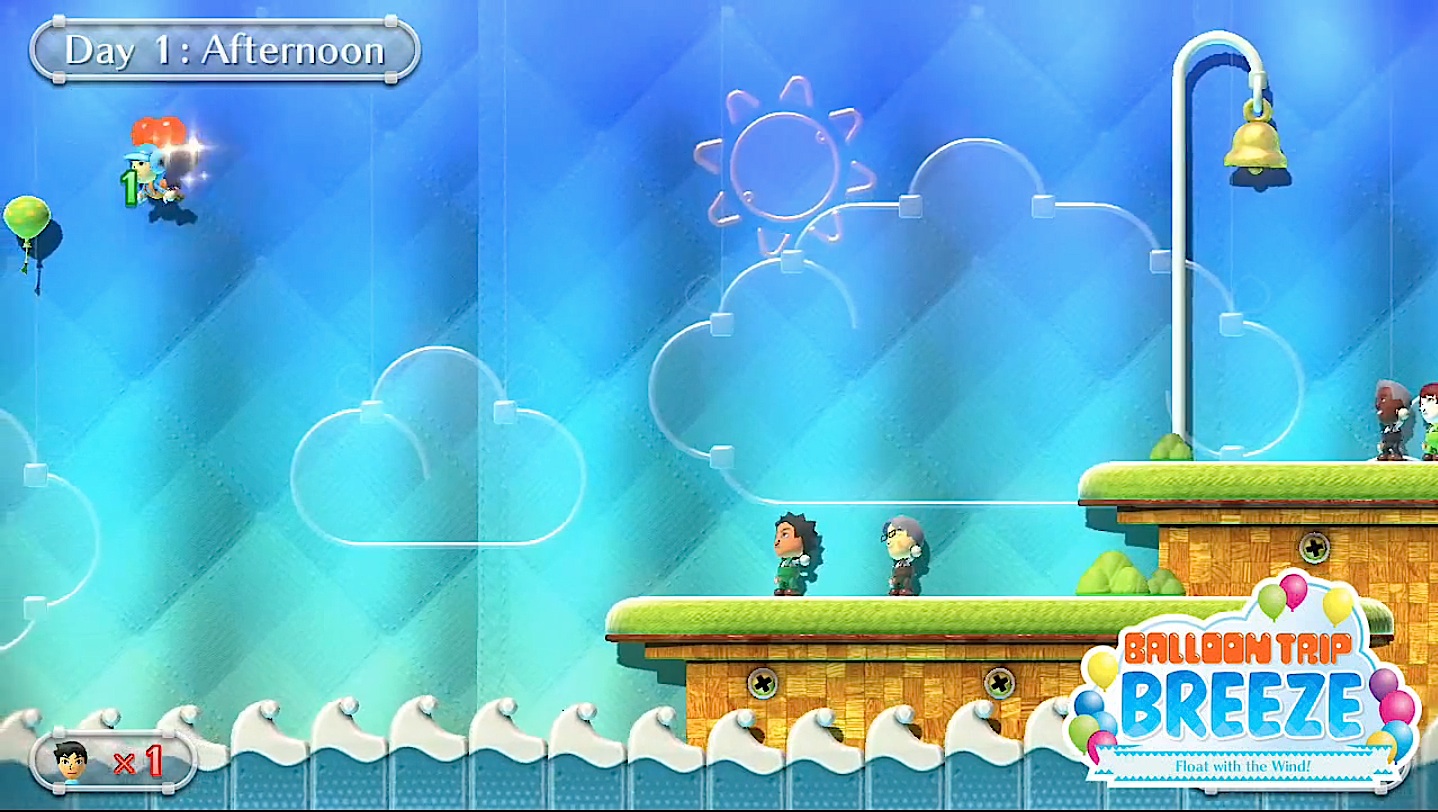
Other than the twelve attractions, there are a few little trinkets to collect via a Pachinko minigame as well as "stamps" that serve as in-game achievements. There is also Miiverse functionality here; you'll see comments from your friends as well as people around the world chatting about the many attractions in the park. But really, there's not much more to this package than what meets the eye. Many of the single player attractions are boring and repetitive, while the team attractions and competitive attractions hold much more promise in terms of having a good time with friends.
In summary, Nintendo Land is solely a multiplayer game, so if you don't have any friends, don't get it. If you do have friends, definitely consider buying it, but keep in mind that you're laying down a hefty $60 for this package. There's no doubt that Nintendo Land packs a ton of fun, but you decide for yourself whether or not this game is worth the asking price.
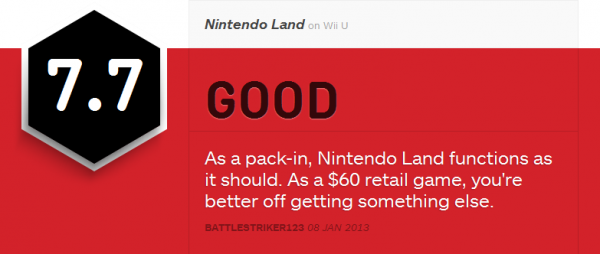
Author's Note: So yeah, you might have noticed that I've thrown out my old review graphic in favor of IGN's new review graphic. Given that IGN is supposed to roll out their "reader review" system again some time soon, I thought now would be a nice time to switch over. I was originally going to put this review up when the new system launched... but I couldn't wait! As always, tell me what you like or don't like about my review in the comments below!
![Amazing Spider-Man Finale Features New [SPOILER] Costume](../../../../../../assets1.ignimgs.com/2018/06/01/untitled-br-1527892808294_small.jpg)